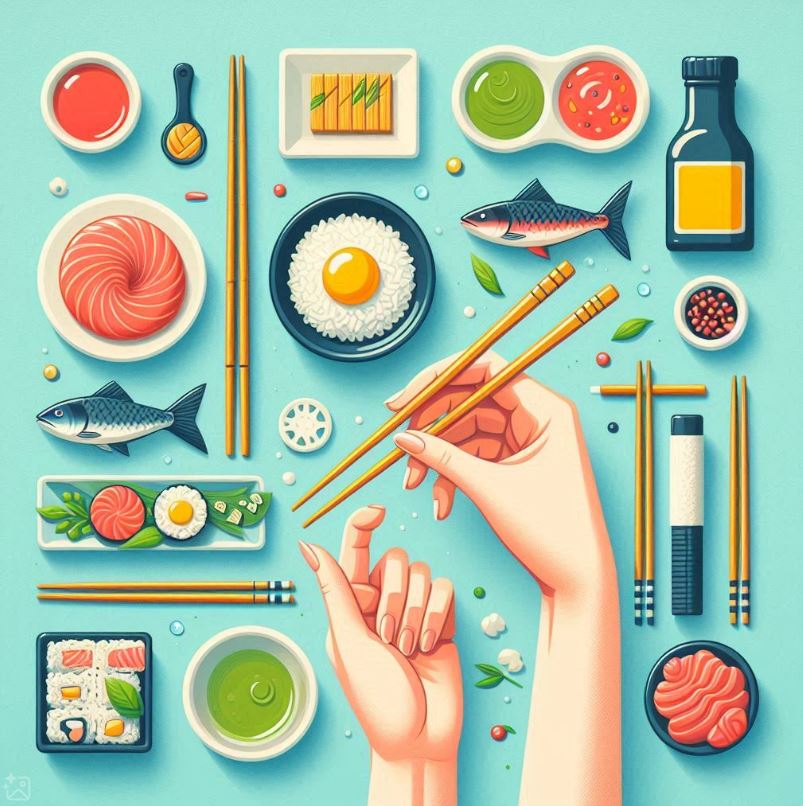Chinese Chopsticks Etiquette: A Guide with Do’s and Don’ts
Have you ever wondered why the Chinese use chopsticks? What is the rich history behind these iconic utensils? And how can you ensure proper etiquette when dining with Chinese friends or colleagues? Chopsticks are more than just eating utensils; they are a symbol of cultural heritage and tradition in many Asian countries. In this comprehensive blog post, we’ll explore the origin of chopsticks, the meaning behind the Chinese word “筷子” (kuai zi), and the essential dos and don’ts for using chopsticks – Chinese Chopsticks etiquette! respectfully.

The Origin of Chopsticks
Chopsticks, known as “筷子” (kuàizi) in Chinese, have a long and storied history. They are believed to have originated over 3,000 years ago during the Shang Dynasty (1600-1046 BCE). Initially, they were used more for cooking than for eating, as their long length made them ideal for reaching into boiling pots of water or oil. The ancestors of the Chinese people also used knives and forks. People cooked their food in large pots, using twigs to remove it. But later, knives and forks came to be regarded as lethal weapons.
The transformation of chopsticks from cooking tools to dining utensils likely occurred during the Han Dynasty (206 BCE–220 CE), influenced by a growing population and the need to conserve resources. As food was cut into smaller pieces before cooking to save fuel, chopsticks became the perfect tool for picking up these bite-sized morsels.
Origin of the Characters “筷子”
The English word “chopstick” seems to come from Chinese Pidgin English, a pidgin where “chop chop” means quickly. The Mandarin Chinese word for chopsticks is kuàizi (筷子). It is a word made of different parts; it has the phonetic part of “快kuài”, which means quick, and a semantic part,竹zhú, meaning bamboo. In Chinese, the old word for “chopsticks” was zhù.
However, zhù became a taboo on ships because it sounded the same as another word meaning “to stop” (住zhù). Consequently, it was replaced by a word of opposite meaning,快 (fast, quick). This gradually spread until it became the word for “chopsticks” in most varieties of modern Chinese. The character for this new meaning of “chopsticks” (筷) for kuài has the semantic element of bamboo added to the character meaning “fast” kuài (快).
Chinese Chopstick Etiquette – DO
When dining with chopsticks, especially in a Chinese cultural context, there are several important etiquette rules to follow. These customs ensure that the meal is a pleasant experience for everyone involved and show respect for the traditions.
- When seated for a meal, it is a common custom to allow elders to take up their chopsticks before anyone else.
- It is acceptable to transfer food to closely related people (e.g. grandparents, parents, spouse, children, or significant others) if they are having difficulty picking up the food.
- Also, it is a sign of respect to pass food to the elderly first before dinner starts.
- Often, family members will transfer a choice piece of food from their plate to a relative’s plate as a sign of caring.
- Traditionally, everyone uses his own chopsticks to take food from the dishes to his own bowl or to pass food from the dishes to the elders’ or guests’ bowls. Today, serving chopsticks (公筷, “community-use chopsticks”) are used. These are used to take food directly from serving dishes; they are returned to the dishes after one has served oneself.

Chinese Chopstick Etiquette – DON’T
- It is poor etiquette to tap chopsticks on the edge of one’s bowl; at one time, beggars made this sort of noise to attract attention.
- One should not ‘dig’ or ‘search’ through one’s food for something in particular. This is sometimes known as “digging one’s grave” or “grave-digging” and is extremely poor form.
- Do not eat when the tips of a pair of chopsticks are not aligned properly. In Chinese, this is called “三长两短” (sān chánɡ liǎnɡ duǎn), which means death.
- Chopsticks should not be left standing vertically in a bowl of rice or other food. Any stick-like object pointed upward resembles the incense sticks that some people use as offerings to deceased family members; certain funerary rites designate offerings of food to the dead using standing chopsticks.
- There are some who say that if you drop your chopsticks while eating, then it will bring you bad luck. And there are some others that say that if you do so, you will be poor. Either way, there is nothing good that will come out of it.
- It is poor etiquette to tap chopsticks on the edge of one’s bowl; at one time, beggars made this sort of noise to attract attention.
- One should not ‘dig’ or ‘search’ through one’s food for something in particular. This is sometimes known as “digging one’s grave” or “grave-digging” and is extremely poor form.
- Do not eat when the tips of a pair of chopsticks are not aligned properly. In Chinese, this is called “三长两短” (sān chánɡ liǎnɡ duǎn), which means death.
- Chopsticks should not be left standing vertically in a bowl of rice or other food. Any stick-like object pointed upward resembles the incense sticks that some people use as offerings to deceased family members; certain funerary rites designate offerings of food to the dead using standing chopsticks.
- There are some who say that if you drop your chopsticks while eating, then it will bring you bad luck. And there are some others that say that if you do so, you will be poor. Either way, there is nothing good that will come out of it.

Chopstick Accessories: Chopstick Rest
A chopstick rest (筷子座 kuài zi zuò) is tableware, similar to a spoon rest, used to keep chopstick tips off the table and to prevent used chopsticks from contaminating or rolling off tables. Chopstick rests are found more commonly in restaurants than in homes.
They come in various shapes and are made from clay, wood, glass, porcelain, or precious stones such as jade. In East Asia, chopstick rests are usually used at formal dinners. They are placed on the front-left side of the dishes, with the chopsticks parallel to the table edge and the points toward the left, or to the right side of the dishes, with the chopsticks pointing towards the front.
Final words
Chopsticks are not just practical utensils; they are rich in cultural significance and history. Understanding their origin, the meaning behind their name, and the proper etiquette associated with their use can greatly enhance your appreciation of Chinese dining traditions. By following these guidelines, you can show respect for Chinese culture and enjoy your meals in a more meaningful way.
So, next time you pick up a pair of chopsticks, remember the centuries of history they carry and the traditions they represent. Happy dining!




